Donovan Bixley lets the cat out of the bag as he completes his Flying Furballs series.
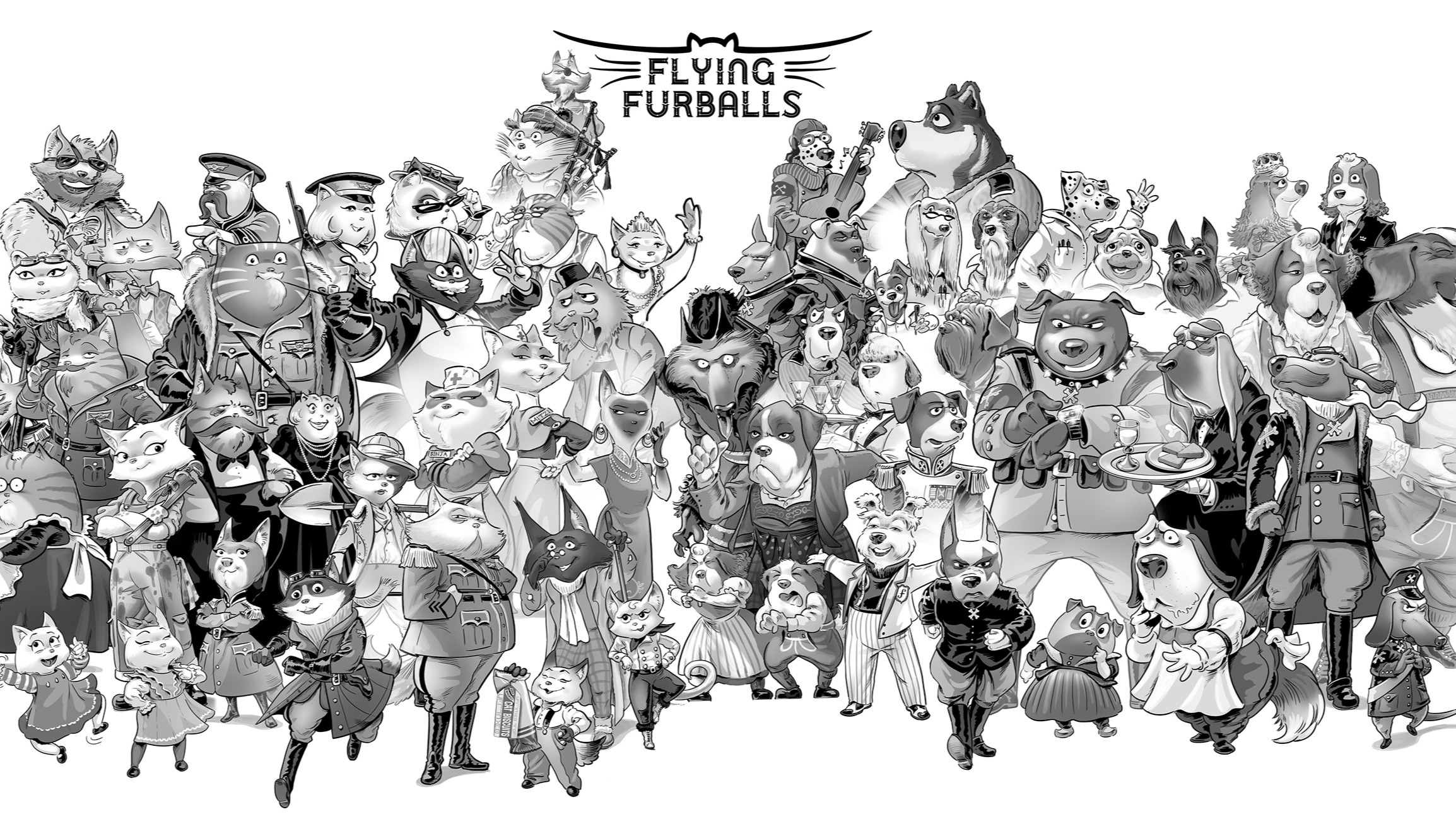
Why did you choose war and spies as the basis for your middle-grade series?
Most of my books start from doodling things I love to draw. Furballs came about when I was scribbling a picture of an old-fashioned bi-plane. I drew the Eiffel Tower in the background, and then, because I love drawing animals, I popped a pussycat in the cockpit. I thought to myself, ‘Hey, he’s a pussycat in a plane in Paris … he’s a … flying furball!’
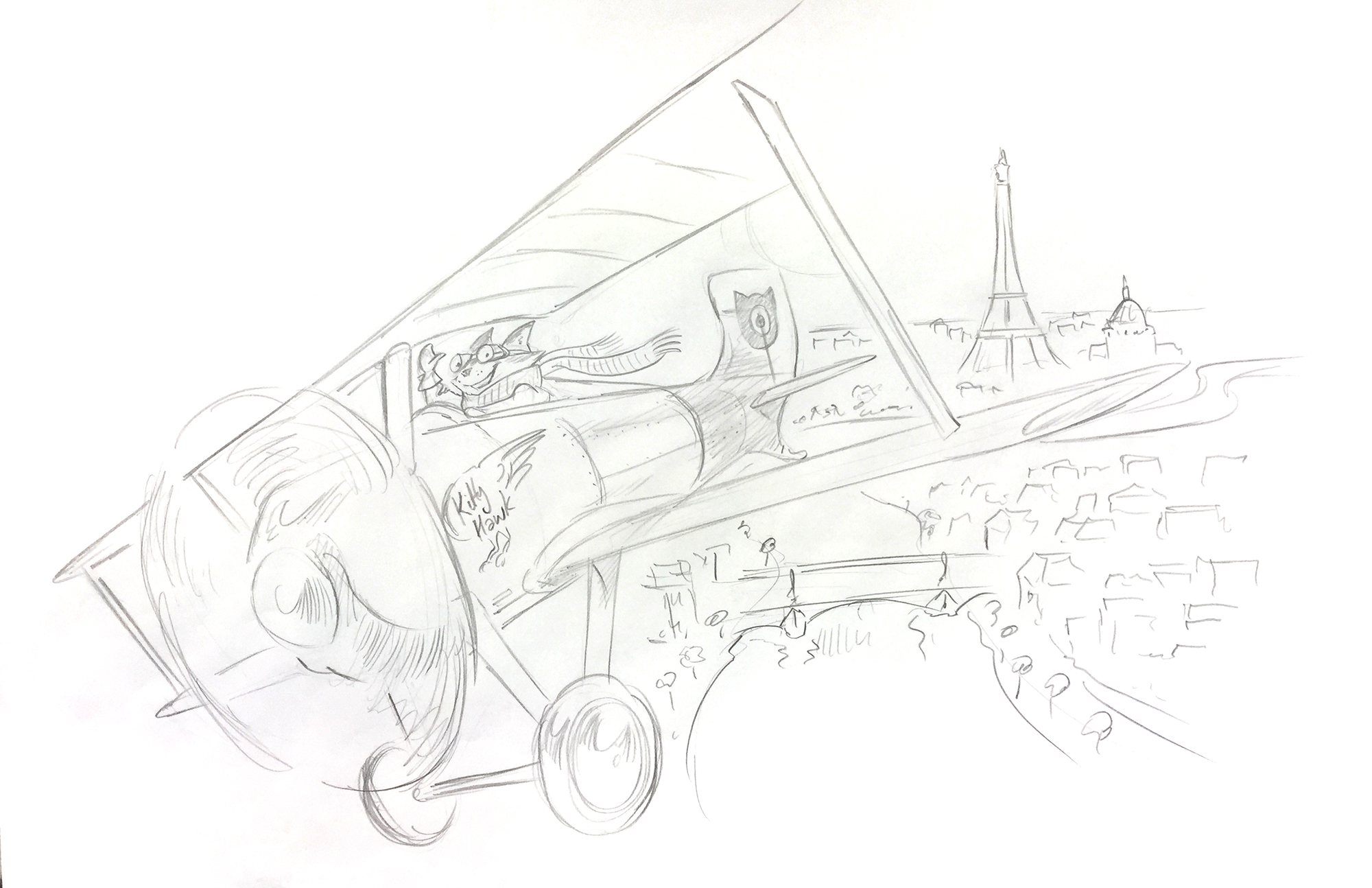
I draw a lot of silly things in my sketchbooks, and most of them don’t go much further than that. I love the romance of the dawn of aviation, and the more I thought about my Flying Furball the more I wanted to know what kind of adventures a pussycat in a plane in Paris might have. It felt exactly like the type of book I would have loved as a kid, so I decided I’d better write a story. The Great War was really just a way to add action and tension with real dramatic motivation for my characters. It was a purrfect fit with cats and dogs—who are supposedly mortal enemies as every child knows.
. . . the more I thought about my Flying Furball the more I wanted to know what kind of adventures a pussycat in a plane in Paris might have.
How did you come up with 9 books of cat and dog puns? Are you a master dad-joker?!
My daughter is looking over my shoulder as I write this, and she says sarcastically, “HAH, HAH, HAH!”. I spent ages trying to come up with a dad joke to answer this question, but dad jokes can’t be planned, they’ve just gotta slip out like natural gas, and be delivered as laconically as possible.
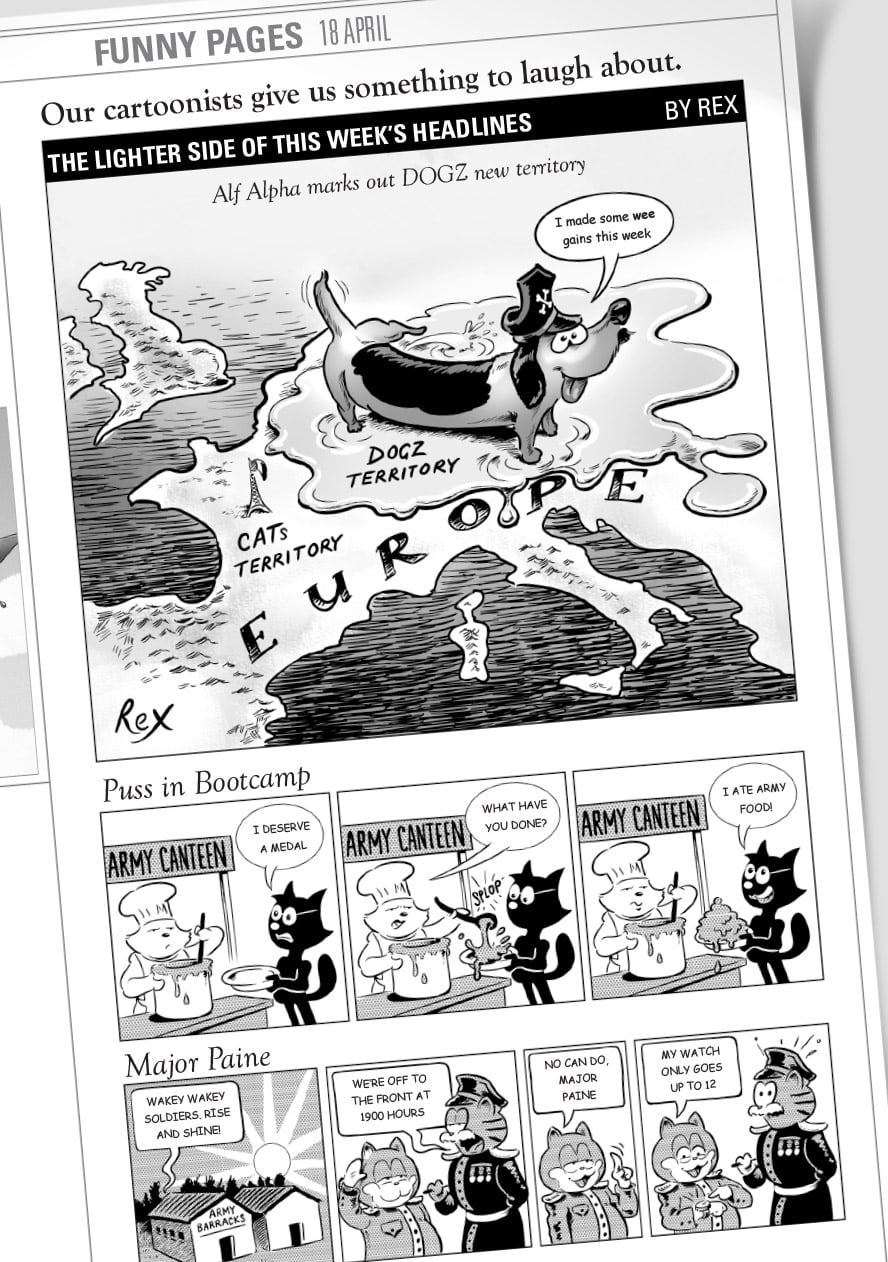
When my work on Flying Furballs seriously started taking flight I was genuinely surprised at just how many cat and dog idioms there are. They’re also universally applicable across cultures and languages, although often used differently than we would. In the French edition of Dogfight, the translators changed “curiosity killed the cat” to “a scalded cat fears cold water”?! Over the five years of working on Flying Furballs I’ve amassed in my files about ten pages of colour-coded cat and dog puns—and, unless puns are one of your pet hates, you’ll be like the cat who got the cream when I say I’ve still got quite a back catalogue of unused puns for future adventures.
. . . unless puns are one of your pet hates, you’ll be like the cat who got the cream when I say I’ve still got quite a back catalogue of unused puns for future adventures.
Are you a planner or a pantser?
If there’s a “plan-ster” option, that’s probably me. I love reading murder mysteries, so I like the idea of a plot that comes to a cleverly-thought-out and satisfying conclusion. Yet at the same time, I’m really keen to keep the adventure fresh while I’m writing and see where my characters and subplots lead. John Irving (Cider House Rules), said he liked to write the last line of a book first, and I’m pretty much in that camp too. So I give myself a strong direction and an ending, but what happens between A and B is totally up in the air (so to speak).
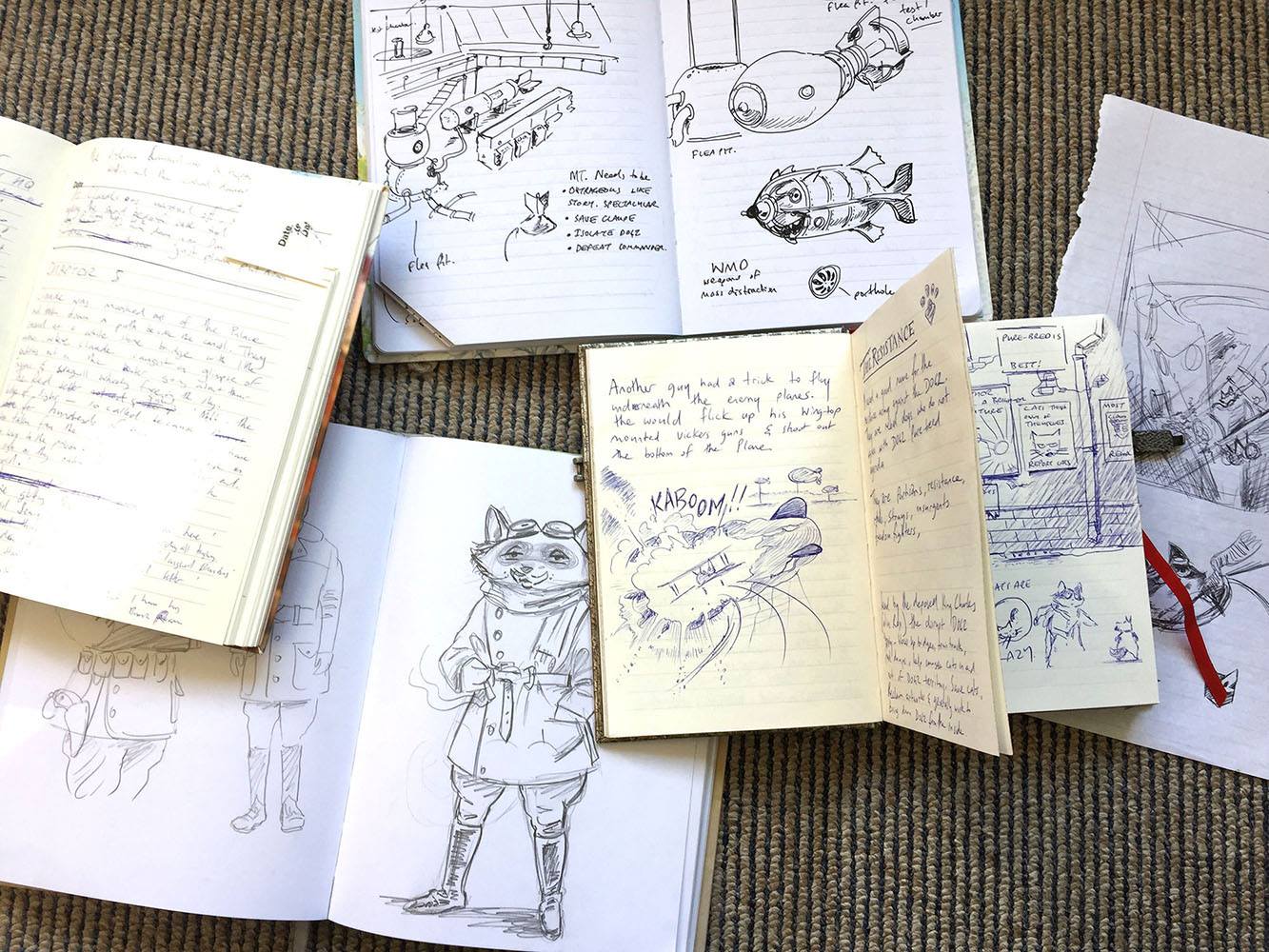
I knew vaguely how the nine books would end. For example, I knew I wanted the last book to be called Nine Lives and to start with our hero’s funeral (crikey dingo!). However, I ended up making things pretty challenging for myself, because I had this great idea of having the cover of the next adventure on the last page of each book. The problem was, each book came out long before I’d even started writing the next story. So, I would do an illustration of a pussycat in a cool aeroplane soaring over some exotic location, then a few months down the track I had to come up with a story that would incorporate the picture. It turned out to be a great challenge which kept the creation of the series fresh and exciting for me.
I knew vaguely how the nine books would end. For example, I knew I wanted the last book to be called Nine Lives and to start with our hero’s funeral (crikey dingo!).
Did the main character arcs transpire in the way you expected them to?
Most of the main characters in Flying Furballs are actually based on the personalities (and appearances) of real cats I’ve had or known. You’re always trying to leash-in your characters and mould them to your plot, but I like the fact that sometimes they go off in their own direction and display these ridiculous cat traits every once in a while, and are not so perfectly thought out.
I was surprised that several of the characters came on much stronger than I’d imagined. The smooth-talking Major Tom, was loosely based on the abdicated King Edward VIII, but he got a big hit of background development in book six Double Cross, when our heroes visit Major Tom’s mansion and meet his parents and the servants. Some of my favourite side characters were based on real people including Jean Batten and Nancy Wake, and I’d like a chance to expand their stories.
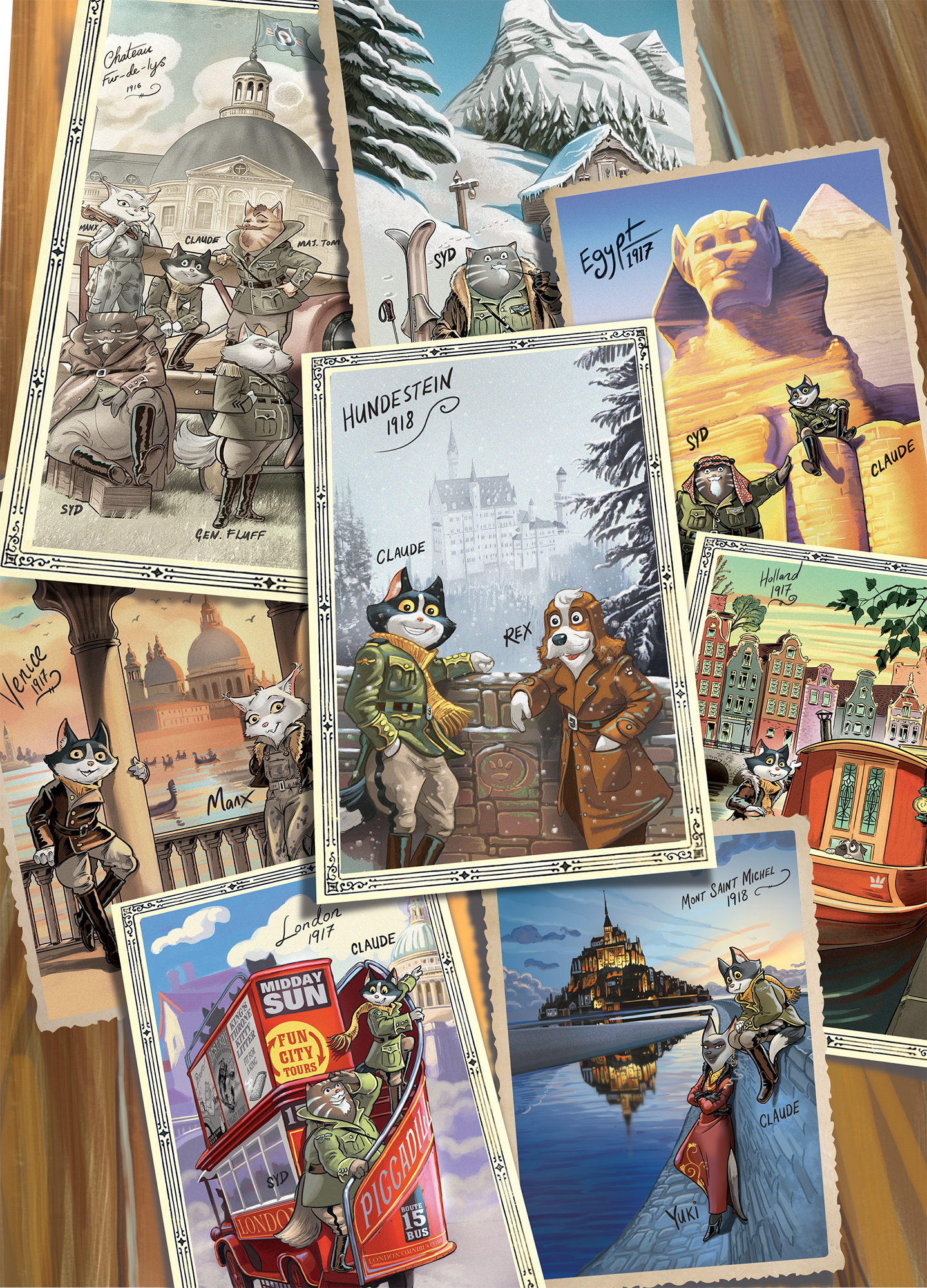
What advice do you have for writers who are embarking on a series?
For any children’s book you have to have a really strong idea of what you’re making and who your audience is. That’s especially true of a long series. Funnily enough the readership is completely out of your hands once the books are in the wild, but the targeting of a particular readership really helps keep you stay focused in the myriad of possible pathways the series might take over several years.
I certainly went to the publisher with a solid idea that the heart of this series was the romance of travel at the dawn of aviation, but I’d also considered the production elements, even down to size and format and price. I’ve known kids who cleaned the bathroom for pocket money just to buy a book they loved, and I wanted Flying Furballs to be affordable for them—which is the reason why Flying Furballs is not a full colour, 200 page hardcover (to many young fans’ regret).
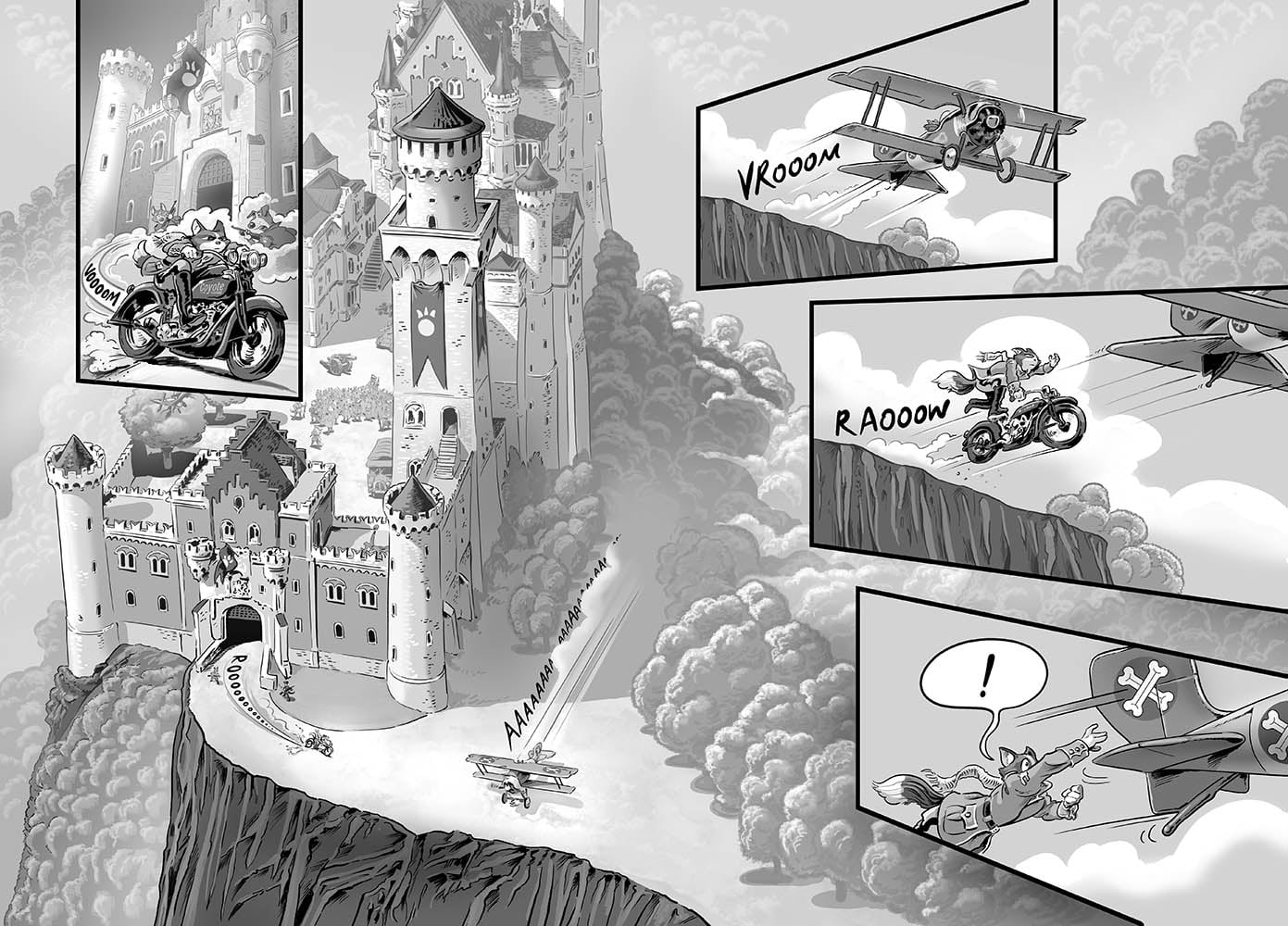
Ironically, given my confident boast about planning, the topic of war, and a seemingly insignificant visual detail turned out to be a frustrating barrier to some international sales. My publisher, Upstart Press, had wide interest in the series, but when some international territories saw the DOGZ flag of crossed bones, mimicking swastikas, they backed off. Such a little thing. Could I have changed it had I known it would receive such a response? Was it just that one detail, or the general theme of the world wars in a children’s book? Or were they just looking for an excuse not to take a book from little old Aotearoa?
My publisher, Upstart Press, had wide interest in the series, but when some international territories saw the DOGZ flag of crossed bones, mimicking swastikas, they backed off.
In hindsight, it seems barking obvious not to have fully considered the implications of these elements, yet the allusion to Nazi iconography for baddies is well established in Western culture. I was like: “For dogs’ sake, they’re not Nazis, they’re dogs versus pussycats—they have dogfights!”. Lessons are always being learned, and I’m planning to continue the series with some post-war Furballs adventures.
You mentioned your audience, was Flying Furballs intended for reluctant readers?
I have experience making several series specifically for reluctant reading boys—but for Flying Furballs I wanted to take the format a bit beyond fart jokes and short sentences. Getting all our tamariki into reading, not just reluctant readers, is turning into a bit of a battleground, and for me, pictures are the chocolate coating that can make a chapter book that little bit more enticing in the current media age.
Getting all our tamariki into reading, not just reluctant readers, is turning into a bit of a battleground, and for me, pictures are the chocolate coating . . .
Furballs works like a picture book, in a chapter book format. I’m using every visual trick I can think of, from newspapers, comic sections, diagrams and maps, to environments, and visual gags. It means that readers have to read both art forms, and it also means I can use the words to tell a much larger story than you’d normally fit in a 100-page book. You’d be surprised at what’s missing if you only read a Flying Furballs manuscript without the illustrations.
Furballs is theoretically aimed at 7-8 year-olds, and as a father of three girls, I was determined that it shouldn’t be solely for reluctant reading boys—my girls are all great readers and love hilariously silly illustrated adventures too. As planned, the use of pictures throughout does draw in those reluctant readers, but unexpectedly I’ve discovered it also makes the series accessible to super young readers, because they can understand the characters and the action just from the illustrations. I’ve had parents with five-year-olds who love the silly adventures, plus one preschool girl who took it for reading time at her daycare! It helps that there’s enough background depth throughout the series for parents to enjoy because an entertained parent will naturally pass on that infectious love of books.
. . . the use of pictures throughout does draw in those reluctant readers, but unexpectedly I’ve discovered it also makes the series accessible to super young readers
At the same time, pictures can be sophisticated and not talk down to my older readers, and I’ve been pleased to visit some high school libraries and find that Flying Furballs is also popular with teenagers.

It always gives me thrill when a parent mails me to say that Flying Furballs is the first chapter book their son or daughter has ever read. By the end of the nine book series that child has just flown through 100,000 words without even realising. I think General Fluffington would say that’s “mission accomplished”.
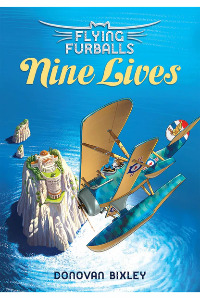

Donovan Bixley
Donovan Bixley was born in Perth, Australia, but shortly after, his family returned to New Zealand where Donovan grew up in the geothermal wilds of Taupo, where he continues to live. His work covers a broad range of genres from his best-selling pre-school books The Wheels on the Bus and Old MacDonald’s Farm, to his internationally acclaimed illustrated biographies Faithfully Mozart and Much Ado About Shakespeare which won the Russell Clark Award for best illustration at the 2016 NZ Book Awards for Children and Young Adults.
He has just released the fourth book in his Flying Furballs series, Most Wanted (Upstart Press), and has also published The Christmas Looky Book (Hachette NZ) this month.



